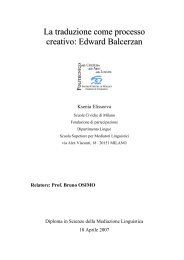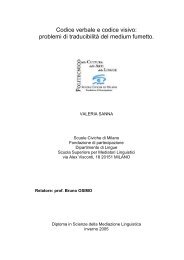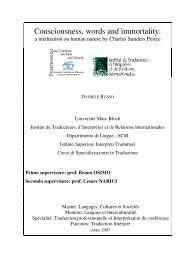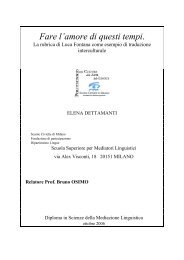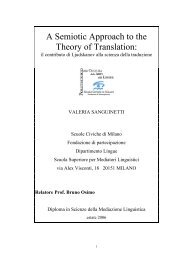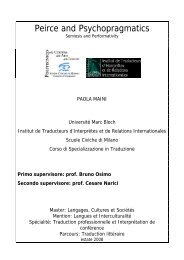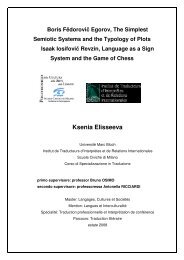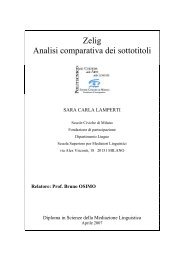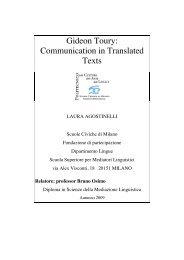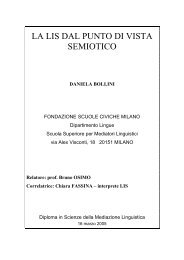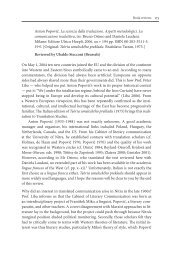Relatore: Professor Bruno OSIMO - Bruno Osimo, traduzioni ...
Relatore: Professor Bruno OSIMO - Bruno Osimo, traduzioni ...
Relatore: Professor Bruno OSIMO - Bruno Osimo, traduzioni ...
Create successful ePaper yourself
Turn your PDF publications into a flip-book with our unique Google optimized e-Paper software.
The memory model can explain why. Retrospection means that people<br />
must retrieve information from long-term memory and then verbalize it. The<br />
inconvenience is that the retrieval process may not reproduce all the<br />
information that was actually present in working memory during the problem-<br />
solving activity.<br />
Furthermore, it is also possible that people retrieve information that was<br />
not actually in working memory as if it was. “After solving the problem, the<br />
solution will help to remember the steps that actually led to it” and to<br />
reconstruct them easily. “However, odd and fruitless steps that occurred on<br />
the way are less likely to be retrieved” (Someren, Barnard and Sandberg 1994:<br />
22).<br />
2. 1. 3. QUESTIONS AND PROMPTING<br />
Another verbalizing procedure implies actually interrupting the problem-<br />
solving process: subjects are asked questions during the activity or are<br />
prompted at given intervals to tell what they are thinking or doing. Therefore,<br />
they don’t have the chance to smooth over the answer as in retrospection. The<br />
drawback of this method is that it interrupts the problem-solving process and<br />
subjects may have difficulty in taking up the thread. Moreover, prompts that<br />
require interpretation may affect the problem-solving process (Someren,<br />
Barnard and Sandberg 1994).<br />
2. 1. 4. THINKING ALOUD<br />
The thinking aloud method differs from classical introspection and<br />
retrospection in that it is undirected and concurrent. The verbalizations are<br />
produced simultaneously with the task performance, but the subject is not as a<br />
rule required to verbalize specific information. “Due to memory limitations<br />
concurrent and undirected reporting is likely to capture more of the process<br />
(less is forgotten) more reliably (less is distorted)” (Jääskeläinen 1999: 66).<br />
According to Ericsson & Simon (1993), thinking aloud does not interfere<br />
with the task performance and the thought process. The subject solves a<br />
problem while the talking is executed almost automatically; in fact, almost all<br />
10



